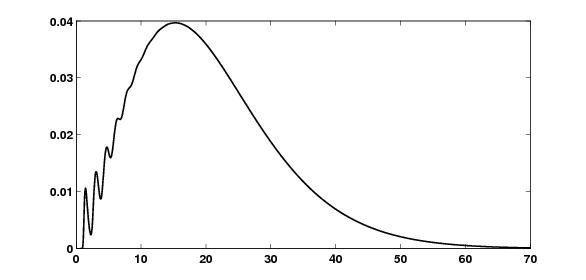 | ||
The Panjer recursion is an algorithm to compute the probability distribution approximation of a compound random variable
Contents
Preliminaries
We are interested in the compound random variable
Claim size distribution
We assume the
In actuarial practice,
Claim number distribution
The number of claims N is a random variable, which is said to have a "claim number distribution", and which can take values 0, 1, 2, .... etc.. For the "Panjer recursion", the probability distribution of N has to be a member of the Panjer class, otherwise known as the (a,b,0) class of distributions. This class consists of all counting random variables which fulfill the following relation:
for some a and b which fulfill
The Panjer recursion makes use of this iterative relationship to specify a recursive way of constructing the probability distribution of S. In the following
In the case of claim number is known, please note the De Pril algorithm. This algorithm is suitable to compute the sum distribution of
Recursion
The algorithm now gives a recursion to compute the
The starting value is
and
and proceed with
Example
The following example shows the approximated density of
As observed, an issue may arise at the initialization of the recursion. Guégan and Hassani (2009) have proposed a solution to deal with that issue .
